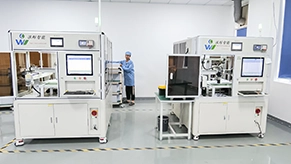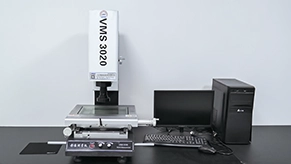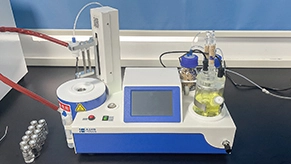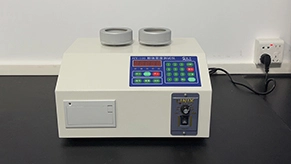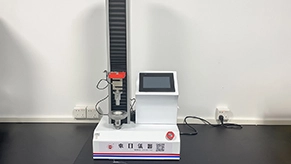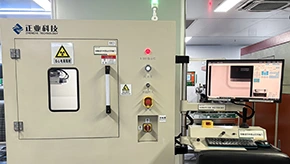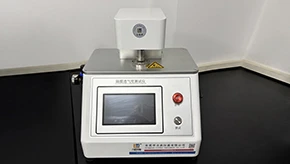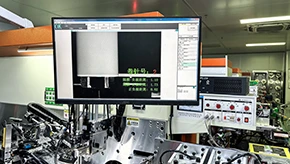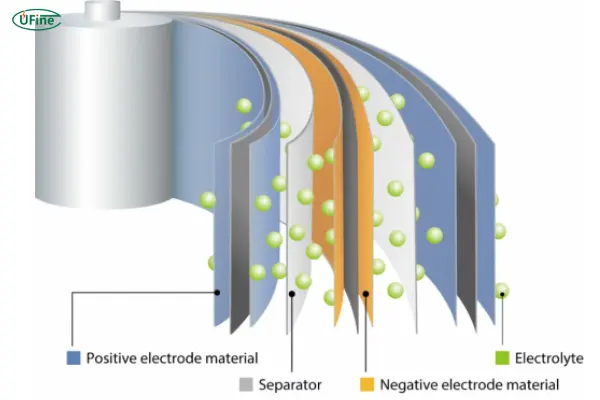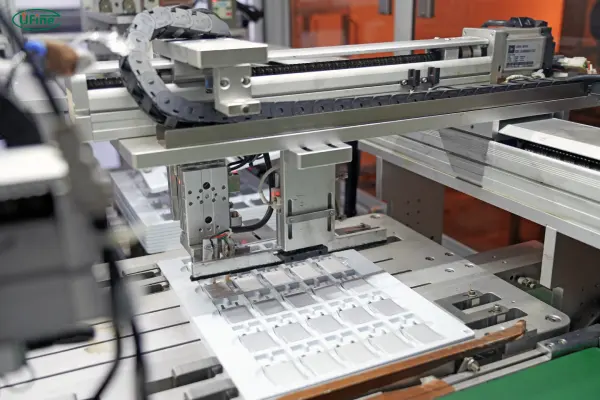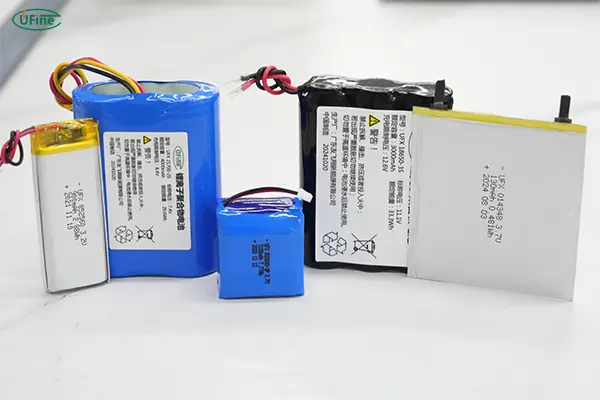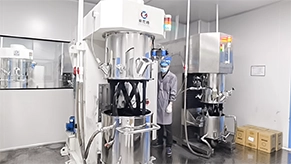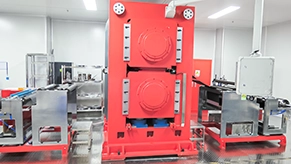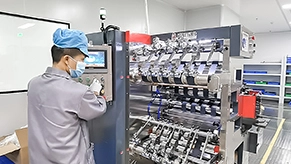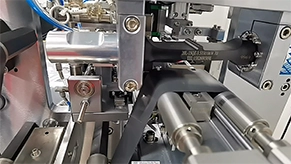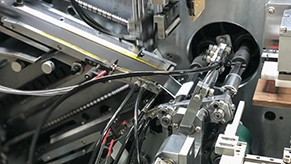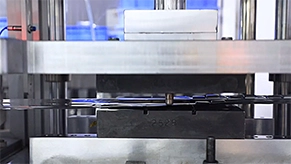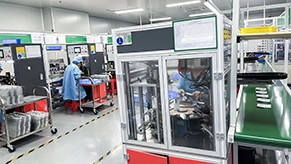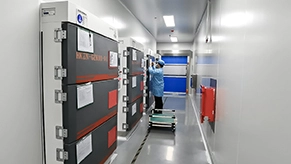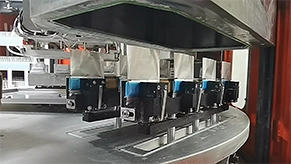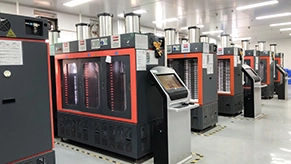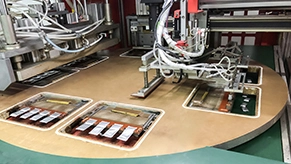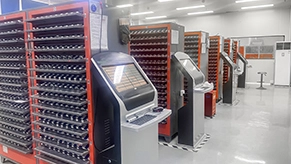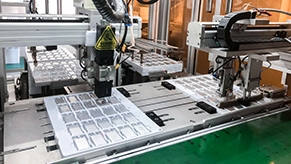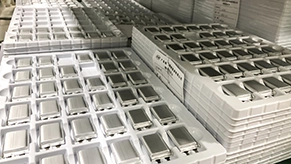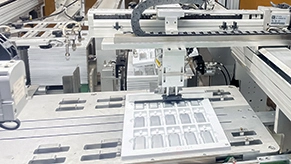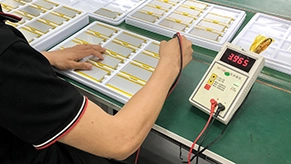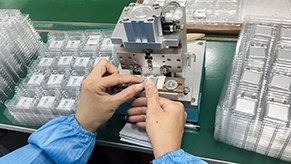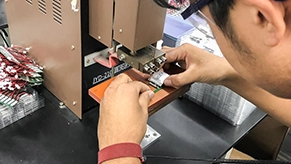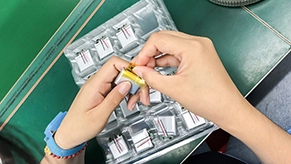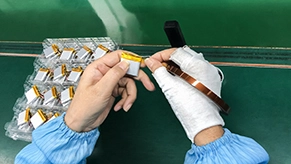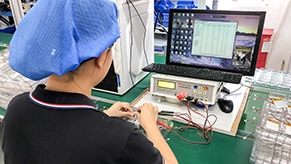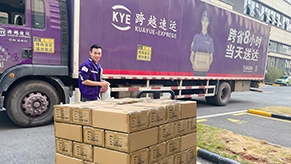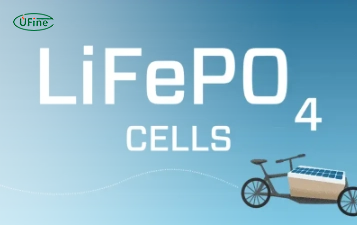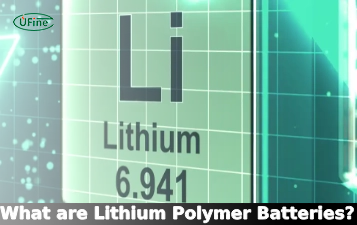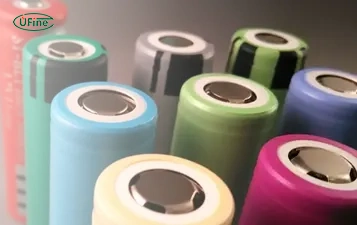파트 1. 리튬 배터리 구성 요소
-
1. 배터리 구조
리튬 배터리는 양극과 음극이 전해질을 매개로 전기화학 반응을 일으키는 원리로 작동합니다. 일반적인 리튬 배터리는 다음과 같은 구성 요소로 이루어져 있습니다:
- a. 음극(Anode, Negative Electrode): 방전 시 전자를 방출합니다.
- b. 양극(Cathode, Positive Electrode): 방전 시 전자를 받아들입니다.
- c. 전해질(Electrolyte): 전극 사이에서 리튬 이온의 이동을 가능하게 합니다.
- d. 분리막(Separator): 음극과 양극의 직접적인 접촉을 막으면서 이온의 흐름은 허용합니다.
-
2. 작동 원리
배터리가 충전되면 리튬 이온은 양극에서 음극으로 이동합니다. 방전 시에는 이온이 다시 양극으로 돌아가면서 전류를 생성합니다.
파트 2. 리튬 배터리 소재
-
고품질 소재는 안정적인 배터리 성능의 기반입니다. 소재 선택은 에너지 밀도, 수명, 안전성 및 비용에 큰 영향을 미칩니다.
1. 양극 소재
주요 양극 소재는 다음과 같습니다:
- a. 리튬 코발트 산화물(LiCoO₂): 높은 에너지 밀도를 가져 소비자 전자제품에 사용됩니다.
- b. 리튬 인산철(LiFePO₄): 우수한 열 안정성과 긴 수명을 자랑합니다.
- c. 리튬 니켈 망간 코발트(NMC): 균형 잡힌 성능으로 전기차(EV)에 주로 사용됩니다.
-
2. 음극 소재
- a. 흑연(Graphite): 안정성과 높은 전도성으로 가장 널리 사용됩니다.
- b. 실리콘-흑연 복합체: 높은 용량을 제공하지만 팽창 문제가 있습니다.
-
3. 분리막
분리막은 폴리에틸렌(PE) 또는 폴리프로필렌(PP)으로 만들어진 다공성 막으로, 이온 흐름을 허용하면서 단락을 방지합니다.
-
4. 전해질
전해질은 일반적으로 리튬 염(예: LiPF₆)을 에틸렌 카보네이트 및 디메틸 카보네이트와 같은 유기 용매에 녹여 사용하며, 효율적인 이온 이동을 가능하게 합니다.
파트 3. 리튬 배터리 생산 공정
-
리튬 배터리 생산은 안전성과 성능을 보장하기 위해 여러 단계의 정밀 제어 및 자동화 공정을 거칩니다. 주요 단계는 다음과 같습니다:
- 1 단계. 전극 제조: 활물질, 바인더, 전도성 첨가제를 혼합해 슬러리를 만들고 금속 호일(양극은 알루미늄, 음극은 구리)에 코팅합니다.
- 2 단계. 건조 및 압연: 코팅된 전극을 건조한 후 균일한 두께로 압축합니다.
- 3 단계. 전극 절단: 전극을 셀 형태에 맞게 원하는 폭으로 절단합니다.
- 4 단계. 셀 조립: 전극과 분리막을 파우치, 원통형, 각형 형태로 적층하거나 감습니다.
- 5 단계. 전해질 주입: 습기 제어 환경에서 진공 밀봉 후 전해질을 주입합니다.
- 6 단계. 초기 충·방전(Formation): 제어된 조건에서 충·방전해 소재를 활성화하고 성능을 안정화합니다.
- 7 단계. 테스트 및 등급 분류: 각 셀은 용량, 전압, 임피던스, 안전성 등을 테스트한 후 포장됩니다.
파트 4. 리튬 배터리 종류
-
리튬 배터리는 용도에 따라 여러 유형으로 최적화되어 있습니다:
- 1. 리튬 폴리머(LiPo): 가볍고 유연한 형태로 드론, 웨어러블 기기, 스마트폰에 사용됩니다.
- 2. 리튬 인산철(LiFePO₄): 뛰어난 안전성과 긴 수명으로 에너지 저장 시스템 및 전기차에 적합합니다.
- 3. 18650 및 원통형 셀: 높은 에너지 밀도와 표준 크기로 전동 공구 및 배터리 팩에 널리 사용됩니다.
- 4. 초박형 및 특수형 배터리: 스마트 카드나 IoT 기기와 같은 얇거나 특이한 형태의 제품에 사용됩니다.
파트 5. 리튬 셀 제조 과정
-
리튬 셀은 배터리 팩의 기본 구성 단위입니다. 제조 과정은 다음과 같습니다:
- a. 젤리 롤/감기 또는 적층: 전극 시트를 특정 구성으로 조립합니다.
- b. 탭 용접: 전류 수집을 위해 전극에 탭을 용접합니다.
- c. 밀봉: 알루미늄/강철 케이스(원통형/각형) 또는 파우치(폴리머)로 밀봉합니다.
- d. 전해질 주입 및 밀봉: 전해질을 주입하고 기밀을 유지합니다.
- e. 초기 충·방전: 성능 안정화를 위해 여러 번 충·방전합니다.
- f. 최종 테스트: 용량, 전압, 저항, 누설 등을 검사합니다.
단계 1: 전극 제조
단계 2: 셀 생산
단계 3: 셀 조립
파트 6. 리튬 배터리 팩 제조 방법
-
개별 셀 생산 후 배터리 팩으로 조립됩니다. 팩 제조 과정은 다음과 같습니다:
- a. 셀 매칭 및 그룹화: 용량과 전압을 일치시켜 성능 균일성을 보장합니다.
- b. BMS(Battery Management System) 통합: 충·방전, 밸런싱, 온도, 안전 기능을 모니터링합니다.
- c. 기계적 설계 및 조립: 보호 케이스에 셀, 배선, PCB, 절연체, 커넥터를 장착합니다.
- d. 최종 테스트: 성능, 내구성, 안전성, 환경 저항성을 검증합니다.
단계 4: 배터리 팩
파트 7. Ufine 배터리 솔루션
-
제품 소개
Ufine Battery는 맞춤형 리튬 배터리 제조사로, 글로벌 고객에게 고성능 배터리를 제공합니다. 주요 제품:
- a. 리튬 폴리머(LiPo)
- b. LiFePO₄ 배터리
- c. 18650 및 원통형 배터리
- d. 초박형/특수형 배터리
- f. 고출력/고·저온용 배터리
-
맞춤화 서비스
전압, 용량, 크기, 형태, 방전율 등을 포함한 완전한 커스터마이징이 가능하며, IoT, 로봇, 의료, 산업, 전자제품 등 다양한 분야에 적용됩니다.
Ufine Battery는 첨단 시설과 경험丰富的한 엔지니어링 팀으로 효율성, 안전성, 성능을 보장합니다.
배터리 생산 장비
배터리 실험실
배터리 제조 기계
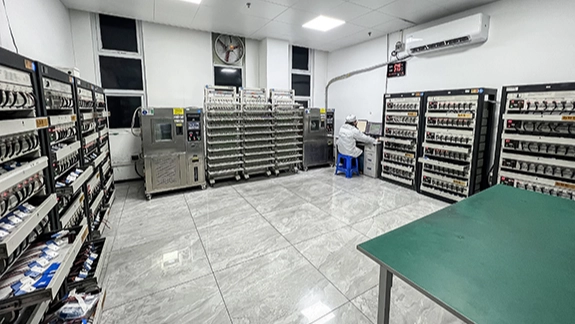
- 1. 용량
- 2. 충전 복구
- 3. 충전 유지
- 4. 충충전율
- 5. 방전 용량
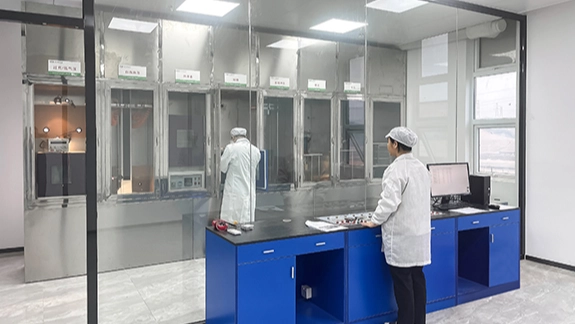
- 1. 외부 단락 테스트
- 2. 압축 테스트
- 3. 충격 테스트
- 4. 손톱 침투 테스트
- 5. 기타 안전 테스트
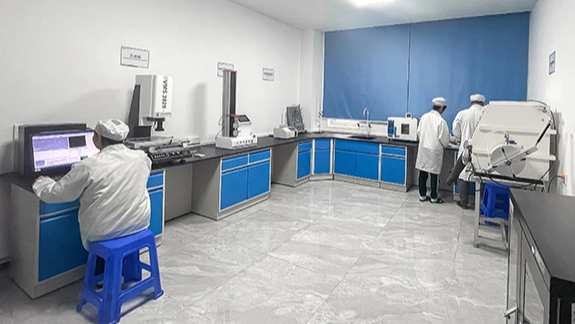
- 1. 밀도
- 2. 점도
- 3. 융점
- 4. 끓는점
